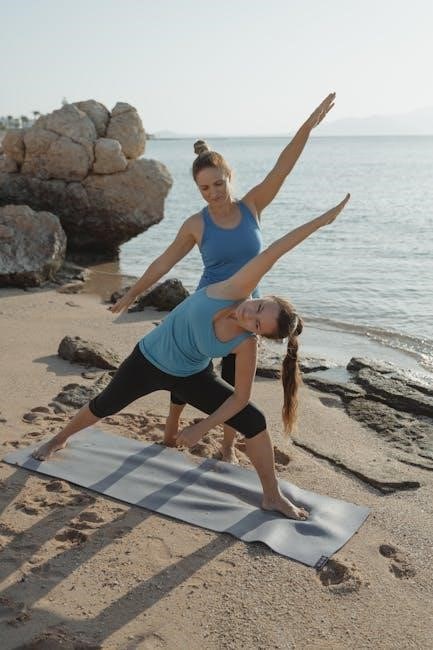Spinal Stenosis Exercises: A Comprehensive Guide (PDF Resources)
Discover the essential exercises to manage spinal stenosis effectively. Access our comprehensive guide and download a spinal stenosis physical therapy exercises PDF for practical use, helping alleviate symptoms and improve mobility with step-by-step instructions.
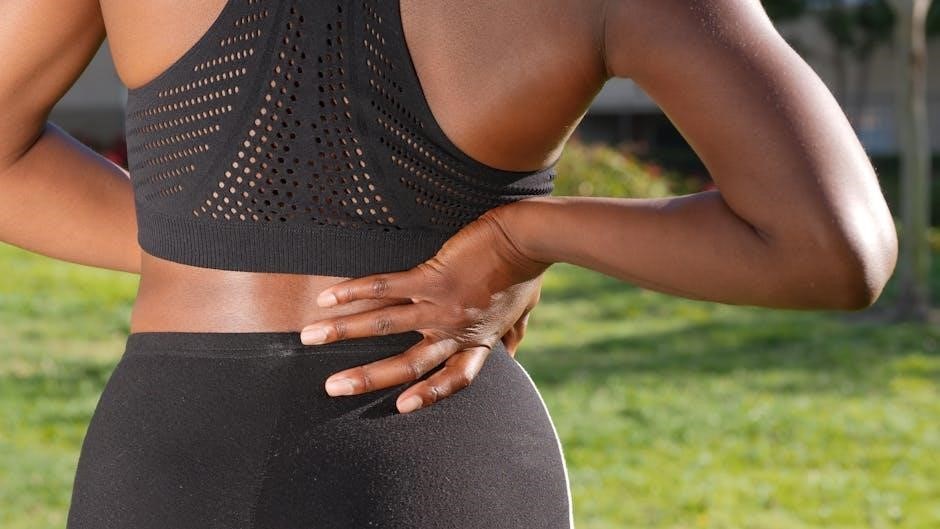
Understanding Spinal Stenosis
Spinal stenosis refers to the narrowing of spaces within your spine, which can put pressure on the spinal cord and the nerve roots. This narrowing can occur in the vertebral canal or the intervertebral foramen due to either osseous or soft tissue encroachment. Arnoldi et al. classified lumbar spinal stenosis by etiology, differentiating between developmental/primary and degenerative/secondary causes.
The condition primarily affects the lower back (lumbar spinal stenosis) and the neck (cervical stenosis). Degenerative lumbar spinal stenosis is a common concern, particularly among older adults. Understanding the underlying causes and mechanisms is crucial for effectively managing and treating spinal stenosis through targeted exercises and interventions.
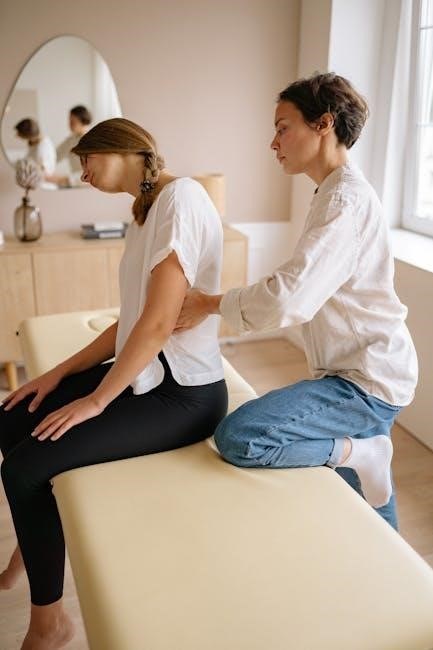
Recognizing the symptoms and seeking appropriate care, including physical therapy and home exercise programs, can significantly improve the quality of life for individuals affected by spinal stenosis. Exercise, especially flexion-based activities, can help alleviate pain by opening the spinal canal.
What is Spinal Stenosis?
Spinal stenosis is a condition characterized by the narrowing of the spaces within your spinal column. This narrowing can place pressure on the spinal cord and the nerves that travel through the spine. It commonly occurs in the neck (cervical stenosis) and lower back (lumbar stenosis), where most back movement happens.
The narrowing can result from various factors, including osteoarthritis, bone spurs, herniated discs, thickened ligaments, and other degenerative changes that occur over time. As the spinal canal narrows, it can compress the nerves, leading to symptoms such as pain, numbness, tingling, and weakness in the arms or legs, depending on the location of the stenosis.
Understanding what spinal stenosis is and how it affects the body is crucial for managing the condition. Treatment options range from conservative approaches like physical therapy and exercises to surgical interventions in more severe cases.
Causes of Spinal Stenosis
Spinal stenosis can arise from a variety of factors that contribute to the narrowing of the spinal canal. One of the most common causes is osteoarthritis, a degenerative joint disease that can lead to the formation of bone spurs, which encroach upon the spinal canal. Herniated discs, where the soft inner material of a spinal disc protrudes and presses on the spinal cord or nerves, can also cause stenosis.
Thickened ligaments, particularly the ligamentum flavum, can contribute to the narrowing as well. Spondylolisthesis, a condition where one vertebra slips forward over another, can also cause stenosis by misaligning the spinal column. Additionally, spinal injuries or trauma can lead to stenosis due to fractures or dislocations.
Less frequently, spinal tumors or cysts can occupy space within the spinal canal, leading to compression. Understanding these potential causes is essential for diagnosing and managing spinal stenosis effectively, guiding appropriate treatment strategies.
Symptoms of Spinal Stenosis
Spinal stenosis manifests with a range of symptoms that vary depending on the location and severity of the narrowing. Common symptoms include pain in the back or neck, which may radiate into the arms or legs. Individuals often experience numbness, tingling, or weakness in the extremities, impacting their ability to walk or perform daily activities.
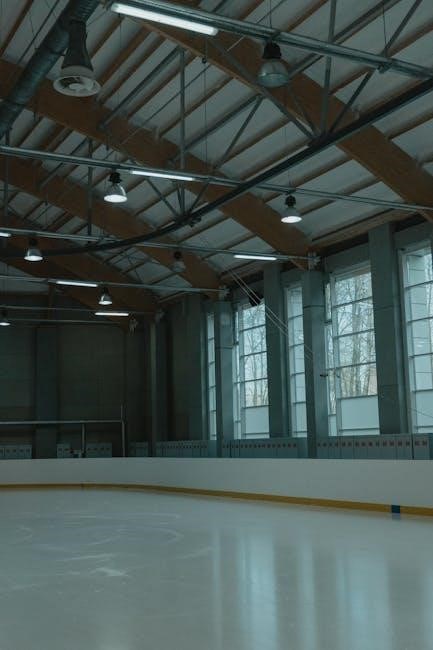
Sciatica, characterized by pain radiating down the leg, is frequently associated with lumbar spinal stenosis. Some individuals may notice changes in bowel or bladder function, indicating severe nerve compression, requiring immediate medical attention. Symptoms often worsen with prolonged standing or walking and are relieved by sitting or leaning forward.
The severity of symptoms can fluctuate, with periods of increased discomfort followed by relative relief. It’s crucial to consult a healthcare professional for an accurate diagnosis if you suspect spinal stenosis, as timely intervention can prevent further complications and improve quality of life.
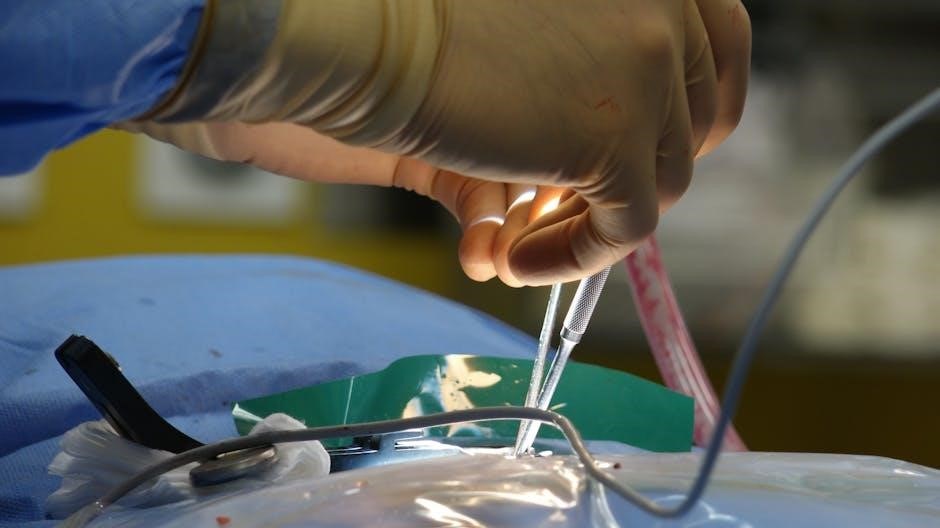
Benefits of Exercise for Spinal Stenosis
Regular exercises offer significant benefits for managing spinal stenosis by increasing spinal mobility, strengthening hip muscles for better walking and standing, and improving posture. Flexion exercises can decrease pain by opening the spinal canal.
Increased Spinal Mobility
Increased spinal mobility is a primary benefit of exercise for individuals with spinal stenosis. Regular movement and stretching can help maintain flexibility in the spine, counteracting the stiffness and rigidity often associated with the condition. Exercises that promote flexion, or bending forward, are particularly helpful in opening up the spinal canal and reducing pressure on the nerves.
Specific exercises such as single knee to chest stretches, double knee to chest stretches, and cat-cow exercises can gently improve the range of motion in the spine. These movements help to lubricate the spinal joints and reduce inflammation. By consistently performing these exercises, individuals can experience improved comfort and ease in their daily activities.
Furthermore, increased spinal mobility can lead to better posture and balance, reducing the risk of falls and injuries. It’s essential to perform these exercises with caution and under the guidance of a healthcare professional to ensure they are safe and effective for individual needs.
Strengthening Hip Muscles
Strengthening the hip muscles is crucial for managing spinal stenosis. Stronger hip muscles provide better support for the spine, improving stability and reducing strain on the lower back. This is particularly important because spinal stenosis often affects the lumbar region, impacting mobility and causing pain.
Exercises that target the hip abductors, adductors, flexors, and extensors can significantly enhance overall function. Examples include pelvic tilts, which engage the core and hip muscles, and hamstring stretches, which improve flexibility and reduce tension in the posterior chain.
By strengthening these muscles, individuals can experience improved balance, gait, and posture, making everyday activities like walking and standing easier. Stronger hip muscles also help distribute weight more evenly, minimizing stress on the spine. It’s important to perform these exercises correctly and consistently, gradually increasing intensity to avoid injury and maximize benefits. Consulting a physical therapist can ensure proper form and a tailored exercise plan.
Improved Posture and Mobility
Improved posture and enhanced mobility are significant benefits of exercise for spinal stenosis. Correct posture alleviates pressure on the spinal canal, reducing nerve compression and associated pain. Exercises that promote spinal flexibility and strength are essential for achieving this. Regular stretching, such as hamstring stretches and the cat-cow exercise, can improve range of motion and reduce stiffness.
Strengthening core muscles supports the spine, further enhancing posture. Pelvic tilts and other core-engaging exercises help stabilize the spine and improve alignment. Improved mobility allows for easier movement and reduces the risk of further spinal compression.
Maintaining a straight spine during exercises is crucial to avoid exacerbating symptoms. Consistent exercise can lead to long-term improvements in posture and mobility, making daily activities more comfortable and manageable. Consulting a physical therapist can provide personalized exercise recommendations and ensure proper form to maximize benefits and prevent injury.
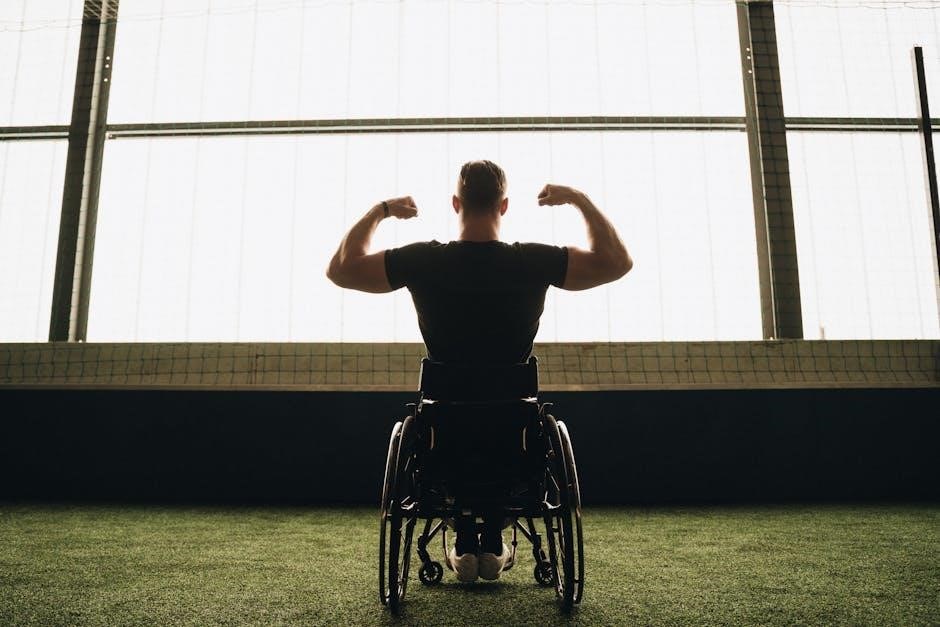
Effective Exercises for Spinal Stenosis (PDF Examples)
Explore effective exercises designed to relieve pain and improve mobility for spinal stenosis. Download our PDF examples for step-by-step guidance, focusing on flexion exercises to decompress the spinal canal and reduce nerve pressure.
Flexion Exercises for Pain Relief
Flexion exercises are crucial for managing spinal stenosis, as they help open up the spinal canal, reducing pressure on the nerve roots. These exercises typically involve bending forward, which can alleviate pain and improve comfort. Incorporating flexion into your routine is vital for symptom management.
Flexion exercises lead to decreased pain by opening the spinal canal, decreasing pressure. Always use caution when performing exercises. Stretching exercises for lumbar stenosis aim to maintain your flexibility. Hold at the point of mild tension for 20 seconds.
Regular exercises can help increase the mobility in the spine. Flexion exercises are safe to try at home and should not increase your pain or symptoms. If you experience any pain or discomfort, discontinue the exercises and contact your healthcare provider.
These exercises are specifically designed to help alleviate the symptoms of spinal stenosis, improve mobility, and enhance overall wellness. A home exercise program that is specifically prescribed and well-tolerated needs to be established.
Single Knee to Chest Stretch
The Single Knee to Chest Stretch is an effective exercise for individuals with spinal stenosis. This exercise gently stretches the lower back muscles and can help alleviate pain by creating more space in the spinal canal. It is a simple yet powerful way to improve flexibility and reduce discomfort.
While lying on your back, hold your knee and gently pull it up towards your chest. Repeat this stretch multiple times during your exercise session. Remember to breathe deeply throughout the exercise to maximize its benefits.
This exercise is safe to try at home and should not increase your pain or symptoms. If you experience any discomfort, discontinue the exercise and consult your healthcare provider; Regular practice of the Single Knee to Chest Stretch can contribute to increased spinal mobility and reduced pain.
Consistency is key. Incorporate this stretch into your daily routine for optimal results. Remember to maintain a healthy weight to further ease the stress on your spine, complementing the benefits of this exercise.
Double Knee to Chest Stretch
The Double Knee to Chest Stretch is another excellent exercise for managing spinal stenosis symptoms. This stretch focuses on gently lengthening the muscles in the lower back and hips, which can help to reduce pressure on the spinal nerves and alleviate pain. It promotes flexibility and improved range of motion.
To perform this exercise, lie on your back with your knees bent. Using your hands, slowly pull both knees toward your chest until you feel a gentle stretch in your lower back. Hold this position for a few seconds, breathing deeply to enhance relaxation and effectiveness.
Avoid any sudden or jerky movements. The goal is to create a comfortable stretch, not to force your body into an uncomfortable position. If you experience any pain, stop immediately and consult with a healthcare professional.
Incorporate the Double Knee to Chest Stretch into your daily exercise routine for consistent relief. Complement this exercise with other stretches and strengthening exercises to achieve comprehensive spinal health. Maintaining a healthy weight is also crucial.
Pelvic Tilt Exercise
The Pelvic Tilt Exercise is a gentle yet effective way to improve core stability and reduce lower back pain associated with spinal stenosis. This exercise helps strengthen the abdominal muscles and promotes proper alignment of the pelvis, contributing to better posture and reduced spinal stress.
To perform the Pelvic Tilt, lie on your back with your knees bent and feet flat on the floor. Gently flatten your lower back against the floor by tightening your abdominal muscles and tilting your pelvis upward. Hold this position for a few seconds, maintaining a steady breath.
Ensure that you are using your abdominal muscles to perform the tilt, rather than pressing your back into the floor. This gentle movement helps engage the core muscles, providing support for your spine. Repeat the exercise multiple times, focusing on controlled and deliberate movements.
The Pelvic Tilt Exercise can be incorporated into your daily routine, and it is especially beneficial when combined with other core-strengthening and stretching exercises. Remember to listen to your body and discontinue if you feel any pain. Consistency and proper form are key to maximizing the benefits of this exercise.
Hamstring Stretch
The Hamstring Stretch is a crucial exercise for individuals with spinal stenosis, as tight hamstrings can exacerbate lower back pain and limit mobility. Stretching the hamstrings helps reduce tension in the back and improves overall flexibility, promoting better posture and easing pressure on the spinal canal.
To perform the Hamstring Stretch, lie on your back with one knee bent and the other leg extended towards the ceiling. Support the back of your thigh with your hands or a towel, gently pulling your leg towards you while keeping your knee slightly bent. You should feel a comfortable stretch along the back of your thigh.
Hold the stretch for 20-30 seconds, breathing deeply and relaxing into the stretch. Avoid locking your knee or forcing the stretch beyond a comfortable range. Repeat the stretch on both legs several times throughout the day, especially before and after physical activity.
Regular hamstring stretching can significantly improve lower back comfort and enhance your ability to perform daily activities with greater ease. Remember to listen to your body and modify the stretch as needed to avoid any pain or discomfort. Consistency is key to achieving long-term benefits.
Cat-Cow Exercise
The Cat-Cow exercise is a gentle and effective way to improve spinal mobility and flexibility, making it a beneficial addition to a spinal stenosis exercise routine. This exercise promotes circulation, reduces stiffness, and helps to relieve pressure on the spinal nerves by encouraging a full range of motion in the spine.
To perform the Cat-Cow exercise, start on your hands and knees with your hands directly under your shoulders and your knees directly under your hips. Your back should be in a neutral position. As you inhale, drop your belly towards the floor, arch your back, and lift your head and tailbone towards the ceiling (Cow pose).
As you exhale, round your spine towards the ceiling, tuck your tailbone, and drop your head towards your chest (Cat pose). Alternate between these two poses, moving slowly and fluidly with your breath. Focus on engaging your core muscles and maintaining a gentle, controlled movement throughout the exercise.
Repeat the Cat-Cow exercise for 5-10 repetitions, paying attention to any areas of stiffness or discomfort. This exercise can be modified to suit your individual needs and abilities. If you experience any pain, stop the exercise and consult with a healthcare professional.

Important Considerations
Prioritize safety when exercising. If pain increases, stop immediately and consult your healthcare provider. Maintaining a healthy weight reduces spinal stress, complementing exercise benefits for spinal stenosis management and overall well-being;
When to Discontinue Exercise
It is crucial to listen to your body and recognize when to stop exercising. If you experience any sharp or escalating pain, numbness, tingling, or increased weakness during or after performing the exercises, discontinue immediately. These symptoms may indicate that the exercises are aggravating your spinal stenosis or causing further irritation to the affected nerves. Consult with your doctor or physical therapist for guidance.
Pay close attention to any changes in your symptoms, and don’t push through pain. Modify or stop the exercise if you feel discomfort. It’s better to err on the side of caution and avoid potential harm. Your healthcare provider can assess your condition, adjust your exercise plan, and ensure you’re performing the exercises correctly and safely.
Remember, the goal is to alleviate your symptoms and improve function, not to exacerbate your condition. Regular communication with your healthcare team is essential for a successful and safe exercise program.
Maintaining a Healthy Weight
Maintaining a healthy weight is crucial for managing spinal stenosis symptoms and overall spinal health. Excess weight puts additional stress on your spine, which can exacerbate the narrowing of the spinal canal and increase pressure on the nerves. Losing weight, if you are overweight, can significantly ease the strain on your spine and reduce pain.
A balanced diet rich in fruits, vegetables, lean proteins, and whole grains is essential for weight management and reducing inflammation. Avoid processed foods, sugary drinks, and excessive saturated fats. Regular physical activity, in addition to targeted exercises for spinal stenosis, can help you burn calories and maintain a healthy weight.
Consult with a registered dietitian or healthcare provider to create a personalized weight management plan that aligns with your specific needs and medical conditions. Remember, even a modest weight loss can make a noticeable difference in your spinal health and overall quality of life.

Additional Resources
Explore additional resources for managing spinal stenosis, including physical therapy exercise PDFs, home exercise programs, and surgical treatment options. These resources offer valuable insights and guidance for comprehensive care and symptom relief.
Spinal Stenosis Physical Therapy Exercises PDF
Unlock a wealth of knowledge with our Spinal Stenosis Physical Therapy Exercises PDF. This resource provides detailed, step-by-step instructions for exercises specifically designed to alleviate the symptoms of spinal stenosis. Focusing on improving mobility and enhancing overall wellness, these exercises are critical for increasing function and decreasing low back pain.
The PDF includes stretching exercises aimed at maintaining flexibility, holding each stretch at the point of mild tension for 20 seconds. Commonly, flexion exercises lead to decreased pain by opening up the spinal canal, decreasing pressure and contact with nerve roots. Download this PDF to integrate effective exercises into your practice or home routine.
Remember to consult with a healthcare provider before starting any new exercise program. This PDF serves as a guide to support your journey toward better spinal health and reduced pain.

Home Exercise Programs for Spinal Stenosis
Embark on a path to pain relief with our specialized home exercise programs for spinal stenosis. These programs are designed to increase spinal mobility, strengthen hip muscles, and improve posture. Regular exercises can help alleviate symptoms and enhance your quality of life.
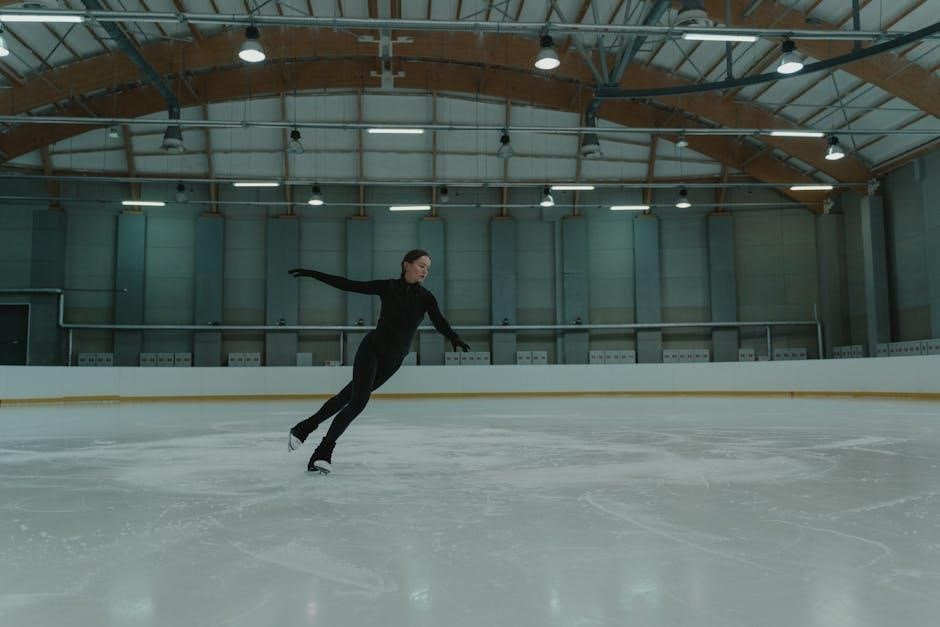
Our programs include a range of exercises, such as single knee to chest stretches, double knee to chest stretches, pelvic tilts, hamstring stretches, and cat-cow exercises. These exercises are safe to try at home and should not increase your pain. Remember to maintain a straight spine during exercises and hold stretches for the recommended duration.
A tailored home exercise program, specifically prescribed and well-tolerated, is essential for managing spinal stenosis. Consult with your healthcare provider to ensure the exercises are suitable for your condition. If you experience any discomfort, discontinue the exercises and seek professional advice.
Surgical Treatment Options for Degenerative Lumbosacral Spinal Stenosis PDF
Explore the surgical treatment options for degenerative lumbosacral spinal stenosis in our comprehensive PDF resource. This document delves into the methods of surgical intervention, providing valuable insights into their effectiveness, particularly for elderly patients.
While exercise and physical therapy are often the first lines of defense against spinal stenosis, some cases may require surgical intervention to alleviate severe symptoms. The PDF outlines various surgical techniques aimed at decompressing the spinal canal and improving the patient’s quality of life.
The document also discusses the evaluation and management of degenerative lumbar spinal stenosis, offering a detailed overview of the surgical approaches and their potential benefits and risks. It is essential to consult with a qualified medical professional to determine the most appropriate treatment plan based on individual circumstances. This resource serves as an informative guide for understanding the surgical options available for managing this condition.
